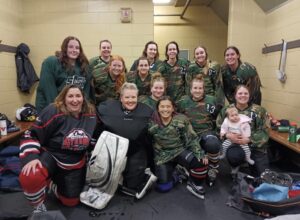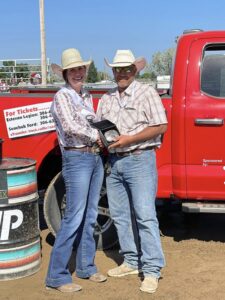Category Archives: EDTC 300
How I Help My Classmates
To start out the semester I had the opportunity to help Sarah Miller create her blog. After the first class, we were asked to create a blog using WordPress, Edusites, or Edublogs. I have had a WordPress blog since my first year. I have had to work my way through learning how to create an aesthetically pleasing and functional. Sarah and I met in the Ed building to start her blog from scratch. I taught her how to create a post, add pictures, links and everything she needed to know about posts. After I had finished teaching her everything she needed to know about posts, I helped her create her categories and showed her how to make sure her posts go into the proper categories. We worked through everything she needed to know for about an hour. Helping Sarah was a great way to refresh myself on how WordPress works and how to create posts.
Throughout the semester myself and Jenna Rhodes would meet and do homework for about an hour every Wednesday. Well, Jenna and I would meet and we would help each other with our posts. We would discuss the topics of our upcoming assigned blog posts so we could grow a deeper understanding of the topics we needed to write about. When either of us had a question we would work together to figure it out the best we could. I helped her figure out some technical difficulties she was having with her blog site. Throughout the semester I helped Jenna work through many things and she did the same for me. Working with Jenna was a great way to help grow my understanding of the class.
My digital footprint
The idea of a digital footprint is something that people have been trying to tell me about for years. I was a child that grew up right in the middle of this digital world. I have had a Snapchat, Instagram, and Facebook account since I was eleven. My life has been all about social media since I got my first iPod touch. I still remember how excited I was when I got my first Snapchat account.
My digital footprint is something that I have been creating for almost ten years now. I will say, what my digital footprint looked like has not been something I was aware of for all those years. People like my parents and teachers did tell me about how the internet is forever and that anyone can see what I post, but the idea of forever didn’t seem real to me. I have always been a pretty smart poster, but I was still a child who thought she was unbreakable. I never had any of those scary stories happen to me, and I am so thankful.
Nicole Lee’s “Having multiple online identities is more normal than you think” is exactly how I use my social media accounts. I have a Snapchat account where my life “ is raw and more visceral”(Lee, 2016). My “Instagram is for friends and people who know me through the internet.”(Lee,2016). Lately, I have been feeling as if my Instagram is too public. I have made my account private within the last couple of years, but I was always concerned about my numbers of followers so I allowed everyone to follow me. This created my followers and account to become more of a popularity contest. Then VSCO became more popular and that became my account where I posted what I wanted. My VSCO is where you see who I really am and what I really love. My “Facebook is for keeping in touch with family and friends”(Lee,2016). This is where I post my wholesome picture that I want my grandparents, aunts, and uncles to see. I get to see all my baby cousins grow up, I see all of the reposts my grandma makes about politics. All of my different types of social media accounts are “indicative of how multifaceted human beings are.” (Lee,2016).
Creating a Lesson Plan
My lesson plan will be for a grade 6 health class. I looked through the curriculum of many grades to find an outcome that could work for a lesson on digital literacy. I think the topic of digital literacy should have its own outcomes. Still, throughout my looking, I did not find anything that even came close to bringing up digital safety, literacy or citizenship. I found it a bit disheartening, as the digital world has become such a big part of our everyday life. We teach street safety, sexual safety, and so much more that helps children be safe within the physical world. Why not the digital world?
The outcome I found that comes the closest to relating to digital literacy is “USC6.5 Analyze the influences (e.g., cultural, social) on perceptions of and personal standards related to body image, and the resulting impact on the identities and the well-being of self, family, and community.” (Saskatchewan Ministry of Education 2009). My thoughts behind using this outcome was teaching the students to spot fake news and fake reports and then use their knowledge to point out fake news relating to body image.
To start my lesson planning I took a look at “ Lesson plan: Fighting Fake News” by Rachel Roberson. The lesson lays out how to warm up the class with some quick writing prompts. The writing prompts questions about what might be consequences of fake news, if the students think they can spot fake news, and if students think they could be fooled. These are good questions to see how much students understand about the topic. After students write down their answers I would ask students to discuss in small groups and then come together as a bigger group and discuss as a whole class. After our discussions I would show two videos How to choose your news – Damon Brown and Can you spot the problem with these headlines? (Level 1) – Jeff Leek & Lucy McGowa. These videos give great strategies to decode the world of fake news and even strategies to help with social media. After the students watch these videos I would ask them to discuss within their small groups about what they think these videos are teaching us. I would ask the groups to take a look back at the questions from the writing prompts to see if their answers had changed. After they had a chance to discuss I would ask them to share some of their ideas with the whole class. Once the discussion has wrapped up I would ask students to complete Break the fake quiz to test out their new strategies.
Blog Post #3 Our We Using Technology Too Much?
I am of the age where I have always seen cell phones, they may have been flip phones and blackberries but they were still cell phones. I grew up learning how to type in class and how to use word, excel, powerpoint, and all of our other favorites. I have learned almost all of my schooling with the help of technology. I have learned to cite work from any website I wanted but never learned how to cite from a book. I see how technology is very helpful and has helped our society grow in many ways, but I also see how it has affected our society. I don’t have all of the answers and would be lying if I said I could give up technology cold turkey. I do know if our answers won’t be found by going cold turkey with technology, but I don’t think the answers will be found in technology alone.
Call me an old soul, but I think there is merit in keeping technology limited in the classroom. I don’t know if limited is the best word because I do think new ways of technology and learning should be in the classroom but so should old ways. As a child who grew up with the rise of technology, I feel the effects. I look back on my schooling and wish we learned outside more or had more hands-on experiences. Technology will always be in the classroom and I have no problem with that. We need to be teaching what is present, but I think we need to use it in moderation. Maybe not even moderation but with good intent behind it, not just looking up things on google but using it to connect with people or places we can’t meet or see in person. As Michael Wesch says in An anthropological introduction to YouTube “It’s not just about information but it’s actually about linking people and it’s about linking people in ways that we’ve never been linked before.” (Wesch,00:06:33-00:55:33). The idea of using the internet and technology in this way is not new but I think it gives a different light as a way of thinking in the classroom.
I know technology is going to be in my life forever and I do use it everyday, but I still have the fear that technology is being overused.
Wesch, Micheal “An anthropological introduction to YouTube”, July 26, 2008, https://www.youtube.com/watch?v=TPAO-lZ4_hU
My first Blog post! All about me!
Hello classmates,
I am Jesa Colliness, I have always had a love for children and helping them learn. I have also always loved playing hockey and riding horses. I have continued to play hockey and ride horses. I play on a rec hockey team here in Regina called the No Regretzkies. The team has become like a family to me, I spend a lot of time with them in the rink. I am also Miss Rodeo Estevan. I had the opportunity to compete against two amazing girls. Being Miss Rodeo Estevan means a lot to me, I have always tried to be a part of my community and inspire girls chase their dreams. Winning rodeo queen is much more than just winning a crown, it is being a person in the community who upholds the utmost respect for myself and being a happy face people can be have friendly conversations with.

Me and my hockey team

Me winning my belt buckle
I have used my blog for a couple of semesters now. At first I was having a hard time navigating the website and all of the helpful functions, but as the semesters pushed on I started to get the hang of it. I don’t think I would say I am a pro by any means, but I know enough that I offered to help a friend in the class start up her blog. In the begin of my blog journey I was not the biggest fan. Then idea sharing my words with my class gave me a bit of anxiety, but I found that all of my classmates were kind and helpful. Now I feel no anxiety posting my words for all to see. I welcomed the idea of it this time, I knowing that I had the tools to post with confidence.
